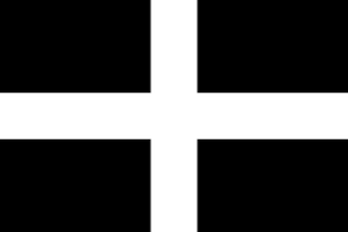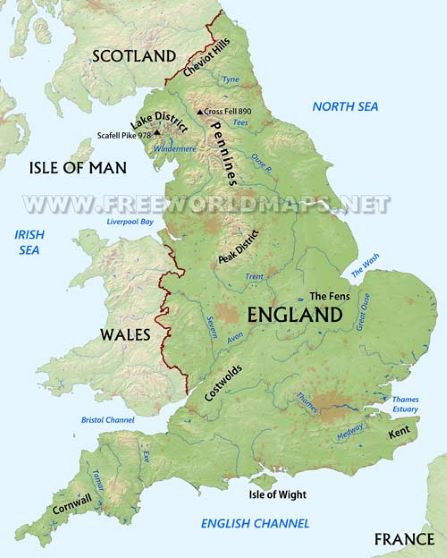Cornwall (Kernow)

Cornwall has long and close ties with Wales, Brittany, and southern Ireland. Only about 100 miles separate Cornwall from Brittany. The nation claims to be the homeland of the legendary King Arthur. In 1756 the Lord of Cornwall signed over his dominion to King of England. Thus Cornwall is wholly owned by the British Crown. Modern day Cornwall is home to approximately 536,000 people of whom 3,000 claim some skill in the language ( 0.55%). Cornwall is the southern tip of Britain that pokes out into the Atlantic Ocean. The tip of Cornwall is known as “Lands End”. It’s home to a famous lighthouse. The land area of Cornwall is 1,376 sq miles. That makes Cornwall roughly the size of Rhode Island. The south coast is often called the Cornish Riviera. Picturesque harbor villages such as Falmouth draw tourists. The north coast is bound by high cliffs and and is home to many seaside resorts and is also known for surfing.
Cornwall is the source of many Christmas Carols. Many of its folk tunes can be found in the Methodist hymnal.
Cornwall has long and close ties with Wales, Brittany, and southern Ireland. Only about 100 miles separate Cornwall from Brittany. The nation claims to be the homeland of the legendary King Arthur. In 1756 the Lord of Cornwall signed over his dominion to King of England. Thus Cornwall is wholly owned by the British Crown. Modern day Cornwall is home to approximately 536,000 people of whom 3,000 claim some skill in the language ( 0.55%). Cornwall is the southern tip of Britain that pokes out into the Atlantic Ocean. The tip of Cornwall is known as “Lands End”. It’s home to a famous lighthouse. The land area of Cornwall is 1,376 sq miles. That makes Cornwall roughly the size of Rhode Island. The south coast is often called the Cornish Riviera. Picturesque harbor villages such as Falmouth draw tourists. The north coast is bound by high cliffs and and is home to many seaside resorts and is also known for surfing.
Cornwall is the source of many Christmas Carols. Many of its folk tunes can be found in the Methodist hymnal.

The history of traditional music in Cornwall closely followed the experience of all Celtic regions that came under the governance of the British empire. During the medieval period harpers, poets, bards were regularly employed to perform in the homes of the noble and aristocratic classes. These musicians were also engage outside of upper class settings performing dance music and contemporary song. English control of Cornwall brought English law. British rule diminished the legal and financing status of the Cornish upper classes and sought to end the role of musicians as vectors of cultural information and news. In addition religious reforms aggressive sought to end dancing and all non-liturgical music. Traditional music rapidly lost it patrons, fell out of favor and vanished. Traditional Cornish music did not reappear until the cultural revival movement of the 20th century.
Dance forms are a key element in all Celtic music. A useful history of dance in Cornwall is provided by The Cornish Dance Society on their website: http://cornishdance.com/history/
The Cornish Dance Society provides this insight: "In Cornish dialect the term for a social dance / barn dance was Troyl. It was derived from the Cornish for a whirl, spiral or reel and it can be seen that this aptly describes social dances like the serpent. In the 21st century the word Troyl has been joined by Ceilidh and Nos Lowen, borrowings which reflect Cornwall’s Celtic affinities. Ceilidh is a Gaelic word for a gathering and Nos Lawen / Fest Noz derive from the Welsh and Breton respectively for a night time party."
An ancient tradition in Cornwall celebrates mid-winter. The festivals are held on Boxing Day and New Years Day. These celebrations were commonly known as the "Darking Day". In common use the term corrupted to "Darkie Day" and the music played for the festivals became known as "Darkie Tunes". The dances done at these festivals are called "guise dances". Dancers wear costumes and masks and often paint their faces in dark or black colors. All of this was in acknowledgement of the dark days of winter. Darking Day is sometimes called "Mummer's Day". These mid-winter festivals are in contrast the mid-summer festivals in which participants dress in white to celebrate the summer solstice.
Cornish dance Cornish forms fall into three broad categories:
Over the centuries Cornish musicians have always been about fusion - bring new instrumental voices into their music. During medieval times crwth, bombard, bagpipes and harp were commonly used. By the 19th century a drum called the crowdy crawn commonly supported a crwth or fiddle. The banjo come to Cornwall during the 1920s. Accordions joined the Cornish ensemble after World War II. Cornish bagpipes are currently enjoying a revival. Today there are more than one-hundred active bands playing mostly or entirely Cornish folk music.
The music of Cornwall and the music of Brittany are very similar. Cornwall and Brittany are geographically close. Their Celtic dialects are mutually understandable. The extensive cultural, trade and marital exchange between the two countries has had great influence over both music and dance.
In 2001 the Cornish people were permitted to record their Celtic heritage on the national census. In 2014 the European Union granted the Cornish people minority status under the terms of the European Framework Convention for the Protection of National Minorities
Dance forms are a key element in all Celtic music. A useful history of dance in Cornwall is provided by The Cornish Dance Society on their website: http://cornishdance.com/history/
The Cornish Dance Society provides this insight: "In Cornish dialect the term for a social dance / barn dance was Troyl. It was derived from the Cornish for a whirl, spiral or reel and it can be seen that this aptly describes social dances like the serpent. In the 21st century the word Troyl has been joined by Ceilidh and Nos Lowen, borrowings which reflect Cornwall’s Celtic affinities. Ceilidh is a Gaelic word for a gathering and Nos Lawen / Fest Noz derive from the Welsh and Breton respectively for a night time party."
An ancient tradition in Cornwall celebrates mid-winter. The festivals are held on Boxing Day and New Years Day. These celebrations were commonly known as the "Darking Day". In common use the term corrupted to "Darkie Day" and the music played for the festivals became known as "Darkie Tunes". The dances done at these festivals are called "guise dances". Dancers wear costumes and masks and often paint their faces in dark or black colors. All of this was in acknowledgement of the dark days of winter. Darking Day is sometimes called "Mummer's Day". These mid-winter festivals are in contrast the mid-summer festivals in which participants dress in white to celebrate the summer solstice.
Cornish dance Cornish forms fall into three broad categories:
- The Scoot - a type of step dancing
- The Furry - festival day dances
- Various dances (reels, jigs, etc.) performed during a Troyl.
Over the centuries Cornish musicians have always been about fusion - bring new instrumental voices into their music. During medieval times crwth, bombard, bagpipes and harp were commonly used. By the 19th century a drum called the crowdy crawn commonly supported a crwth or fiddle. The banjo come to Cornwall during the 1920s. Accordions joined the Cornish ensemble after World War II. Cornish bagpipes are currently enjoying a revival. Today there are more than one-hundred active bands playing mostly or entirely Cornish folk music.
The music of Cornwall and the music of Brittany are very similar. Cornwall and Brittany are geographically close. Their Celtic dialects are mutually understandable. The extensive cultural, trade and marital exchange between the two countries has had great influence over both music and dance.
In 2001 the Cornish people were permitted to record their Celtic heritage on the national census. In 2014 the European Union granted the Cornish people minority status under the terms of the European Framework Convention for the Protection of National Minorities
The Cornish tunes below are presented in both standard notation and ABC notation. Click on the audio players to hear the tunes. If you want to download an mp3 file of a tune to study it in greater depth, go to the tune download page.
Performance examples of Cornish music can be found at this link.
Performance examples of Cornish music can be found at this link.
Sets From Cornwall
Reels: Beside the Water - Be Gone From My Window
| |||||||
Jigs: Bishop's - The Rogues - Jackson's Claret
| |||||||
Tunes
|
|
| ||||||||||||||||||
|
| ||||||||||||||||||||||||||||||||||||||||
|
|
| ||||||||||||||||||||||||||||||||||||||||||||||||||||||
More traditional Cornish tunes are available at this site:
http://www.an-daras.com/music/m_intro.htm
http://www.an-daras.com/music/m_intro.htm